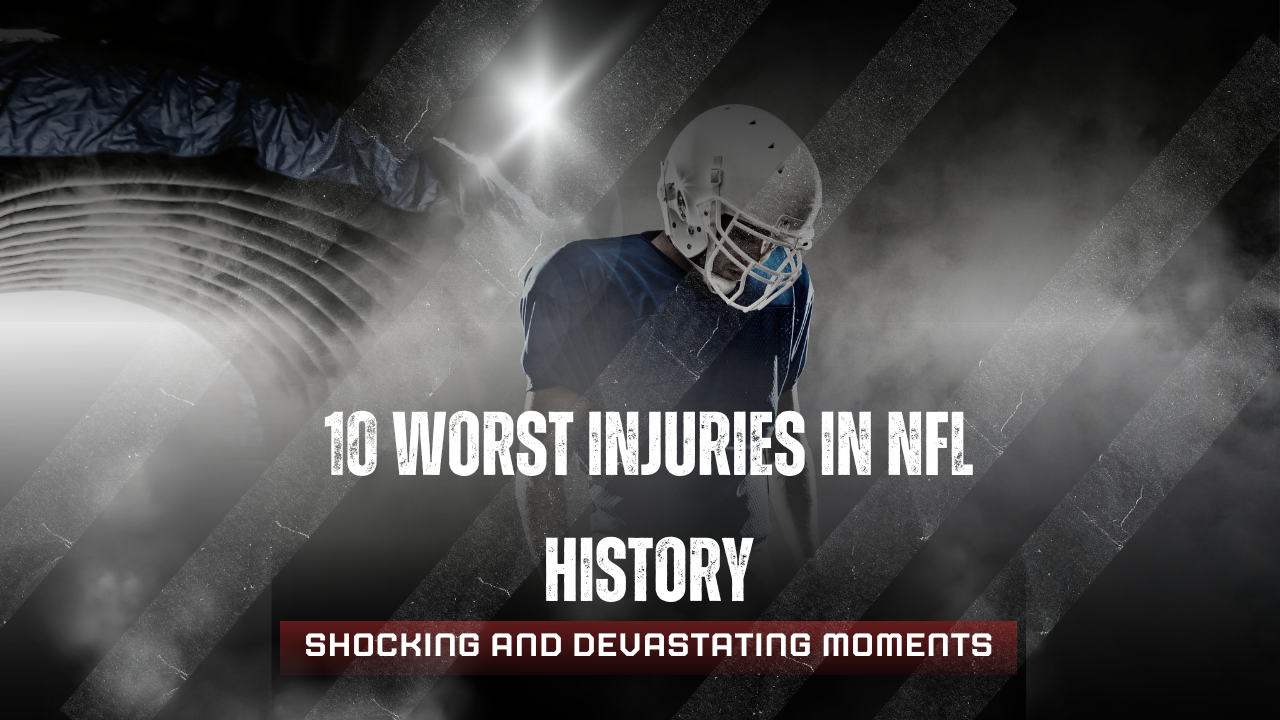The NFL is a league known for its intensity and physicality, where the stakes are high and the risks even higher. Over the years, we’ve witnessed some of the most thrilling plays and breathtaking moments. However, along with the glory comes the agony of injuries. Some injuries not only end careers but also have a lasting impact on players’ lives. Here, we delve into ten of the worst injuries in NFL history, highlighting their severity and the stories behind them.
Joe Theismann's Leg Injury (1985)
One of the most infamous injuries in NFL history occurred on November 18, 1985. Washington Redskins quarterback Joe Theismann suffered a gruesome leg injury during a game against the New York Giants. Lawrence Taylor, a linebacker for the Giants, sacked Theismann, causing a compound fracture of his tibia and fibula. The injury was so severe that it effectively ended Theismann’s career. The image of Theismann’s leg bending unnaturally remains one of the most haunting in sports history.
Darryl Stingley's Paralysis (1978)
Darryl Stingley, a wide receiver for the New England Patriots, experienced one of the most tragic injuries in NFL history. During a preseason game against the Oakland Raiders in 1978, Stingley was hit by Jack Tatum. The collision resulted in Stingley suffering two fractured vertebrae and a compressed spinal cord, leaving him paralyzed from the chest down. This injury brought significant attention to the dangers of the game and the need for safer play.
Bo Jackson's Hip Injury (1991)
Bo Jackson was a dual-sport star, excelling in both baseball and football. His football career, however, was cut short due to a severe hip injury. In a 1991 playoff game, Jackson dislocated his hip during a tackle. This injury led to avascular necrosis, causing the bone tissue to die due to lack of blood supply. Despite attempting a comeback, Jackson’s football career was effectively over, though he continued to play baseball for several more years.
Johnny Knox's Spinal Injury (2011)
Chicago Bears wide receiver Johnny Knox suffered a career-ending spinal injury on December 18, 2011. During a game against the Seattle Seahawks, Knox was hit hard, causing his body to bend backward in an unnatural position. He fractured a vertebra and required spinal fusion surgery. Despite a long and arduous recovery process, Knox was never able to return to the field, marking the end of his NFL career.
Reggie Brown's Spinal Cord Injury (1997)
In December 1997, Detroit Lions linebacker Reggie Brown suffered a life-threatening spinal cord injury during a game against the New York Jets. Brown attempted to make a tackle and ended up with his head colliding with another player’s thigh, resulting in a severe neck injury. He lost consciousness and had to be resuscitated on the field. The injury ended his football career, but thankfully, Brown recovered enough to lead a normal life afterward.
Dennis Byrd's Paralysis (1992)
New York Jets defensive end Dennis Byrd’s career was abruptly ended on November 29, 1992, when he collided with a teammate while trying to sack the opposing quarterback. The collision resulted in a broken neck and temporary paralysis. Although Byrd was told he might never walk again, he made a miraculous recovery, regaining his ability to walk but never returning to professional football.
Napoleon McCallum's Knee Injury (1994)
In a Monday Night Football game in 1994, Los Angeles Raiders running back Napoleon McCallum suffered a devastating knee injury. As he was tackled, McCallum’s leg bent backward grotesquely, tearing multiple ligaments, rupturing an artery, and severely damaging the nerve. The injury was so severe that it not only ended his football career but also nearly led to the amputation of his leg.
Kevin Everett's Spinal Cord Injury (2007)
Buffalo Bills tight end Kevin Everett’s career-ending injury occurred during the 2007 season opener. After making a tackle on a kickoff return, Everett fell to the ground motionless. He had suffered a severe spinal cord injury that initially left him paralyzed. Immediate and innovative medical intervention, including the use of cold therapy to reduce swelling, allowed Everett to regain movement and eventually walk again, though he never played football again.
Eric LeGrand's Paralysis (2010)
In October 2010, while playing for Rutgers University, Eric LeGrand suffered a severe spinal cord injury during a game against Army. The collision left him paralyzed from the neck down. His injury, while occurring in college, is often discussed in the context of the NFL due to the similarities in the level of play and the risks involved. LeGrand has since become an inspirational figure, advocating for spinal cord injury research and recovery.
Alex Smith's Leg Injury (2018)
Washington Redskins quarterback Alex Smith experienced a life-threatening leg injury on November 18, 2018. During a game against the Houston Texans, Smith was sacked and suffered a compound fracture of his tibia and fibula, reminiscent of Joe Theismann’s injury 33 years earlier to the day. Complications arose, including infections that required 17 surgeries and nearly led to an amputation. Remarkably, Smith made an incredible comeback, returning to play in the NFL in 2020 before retiring.
The Human Toll of Football
These injuries underscore the brutal nature of professional football. While the sport brings excitement and joy to millions, it also carries significant risks for the athletes. The physical and emotional toll on players and their families is immense. Many of these injuries have led to improved safety protocols and changes in the rules to protect players better. However, the inherent danger remains a stark reminder of the price of glory in the NFL.
In reflecting on these injuries, we see not only the physical damage but also the resilience and courage of these athletes. Their stories are a testament to the human spirit’s capacity to overcome adversity, adapt to new realities, and inspire others. Whether they managed to return to the game or transitioned to new paths in life, their experiences continue to impact the NFL and its fans profoundly.







